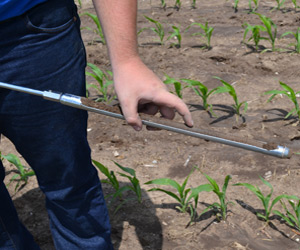COMPOSITE SOIL SAMPLING
Composite soil sampling is the traditional soil sampling method. To make a composite sample you mix all the soil cores collected from a defined area into a single melded sample. In other words, the objective is to get a sample that represents the average of the area that is being sampled.
The Goal of Composite Sampling
Soil sampling results in a better understanding of the soil nutrients. Therefore, achieving a better application of inputs, such as fertilizer, lime and gypsum.
Composite soil sampling is the oldest and the most widely used sampling method. It has been taught by universities for decades. So, one could say that zone soil sampling is the next evolution of composite sampling. That is to say, the grouping of like areas into one representative sample is comparable but more refined with zone samples.
Composite Sampling Tips
Collecting Composite Samples
Typically, twenty to thirty soil cores make up a composite sample. Those cores are randomly located within similar areas of the field.
It is important to consider the sample use when deciding how to sample a field. Next, decide how the field is going to be split based on field characteristics. Within the field areas that are alike should be grouped together. For example, soil texture, elevation and cropping patterns make great boundaries for dividing uniform areas. Certainly, it takes some prior planning to get a good representative sample.
Often times, when composite soil sampling crop consultants split irrigated field into halves or quadrants. Consequently, the uniform patterns result in consistent soil sample tests over time. Consistency is important because it lets you see how the soil test levels change from year to year.
